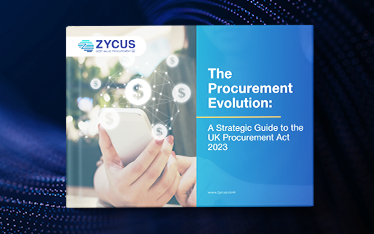Addressability of Spend refers to the percentage of total procurement expenditure that can be strategically managed and influenced through procurement activities, such as negotiations, supplier selection, and contract management. This metric is essential for identifying controllable spending areas within an organization’s procurement process, enabling procurement teams to optimize spending, improve supplier relationships, and maximize cost savings.
Key Benefits
– Cost Savings: Enhances opportunities for savings by improving price compliance and reducing maverick spend. This leads to approximately 1-4% savings of addressable spend through better negotiations and optimized procurement strategies.
– Process Efficiency: Streamlines procurement operations by reducing manual processing time and errors. This can result in a 20-30% reduction in processing time and a substantial decrease in errors across procurement cycles.
– Spend Visibility: Increases transparency into where money is being spent, which suppliers are used, and identifies cost-saving opportunities. This visibility is crucial for informed decision-making and strategic procurement improvements.
– Strategic Sourcing Decisions: Enables organizations to make more strategic decisions by providing actionable insights from spend data, improving supplier selection processes, and leveraging AI for better category management.
– Compliance and Risk Management: Ensures compliance with company policies and manages supplier risks effectively. AI-driven automation assists in predicting and mitigating risks, enhancing overall procurement governance.
Related Terms
– Cost Savings: Enhances opportunities for savings by improving price compliance and reducing maverick spend. This leads to approximately 1-4% savings of addressable spend through better negotiations and optimized procurement strategies.
– Process Efficiency: Streamlines procurement operations by reducing manual processing time and errors. This can result in a 20-30% reduction in processing time and a substantial decrease in errors across procurement cycles.
– Spend Visibility: Increases transparency into where money is being spent, which suppliers are used, and identifies cost-saving opportunities. This visibility is crucial for informed decision-making and strategic procurement improvements.
– Strategic Sourcing Decisions: Enables organizations to make more strategic decisions by providing actionable insights from spend data, improving supplier selection processes, and leveraging AI for better category management.
– Compliance and Risk Management: Ensures compliance with company policies and manages supplier risks effectively. AI-driven automation assists in predicting and mitigating risks, enhancing overall procurement governance.
References
For further insights into these processes, explore Zycus’ dedicated resources related to Addressability Of Spend:
- Built to Last: Three Paths to a Successful Procurement Transformation – Path 1 – The Greenfield Scenario Contd.
- Procurement’s Transformation: A 11 step Toolkit for Success
- Enhancing Supply Chain Resilience with Predictive Procurement Orchestration
- Pull Out All The Stops: A Cure-all for Chief Procurement Officers
- Enhancing Supply Chain with Digital Procurement: A Strategic Guide
White Papers
Master the UK Procurement Act 2023: Ensure Compliance & Drive Procurement Excellence

Filter by
Consolidated Invoice
A Consolidated Invoice is a single invoice document that aggregates multiple individual transactions or services provided over a certain period,
Compliance Scorecard
A Compliance Scorecard is a structured tool used within procurement processes to evaluate and ensure that all sourcing activities adhere
Contract Addendum
A contract addendum is a formal document that modifies or adds terms to an existing contract without altering its original
Contract Authoring
Contract Authoring refers to the process of creating, drafting, and preparing contracts for agreement and execution. It involves outlining terms,
Contract Review
Contract Review is the structured analysis and evaluation of contract terms to ensure compliance, mitigate risks, and align with organizational
Bid Response
A Bid Response is a formal reply by a supplier or vendor to a Request for Proposal (RFP) issued by





















































